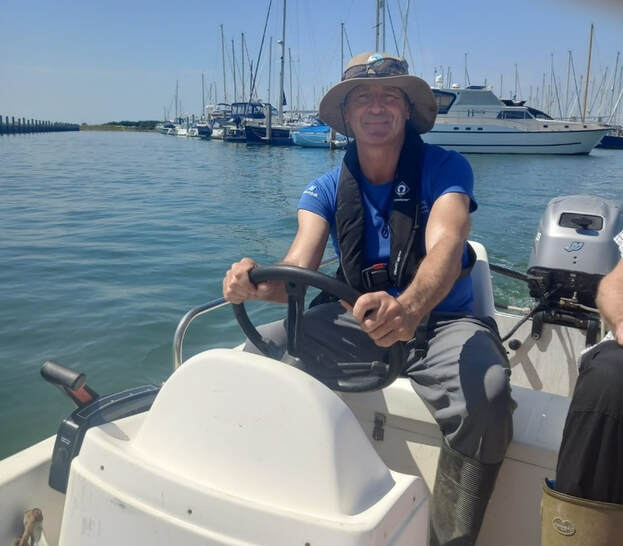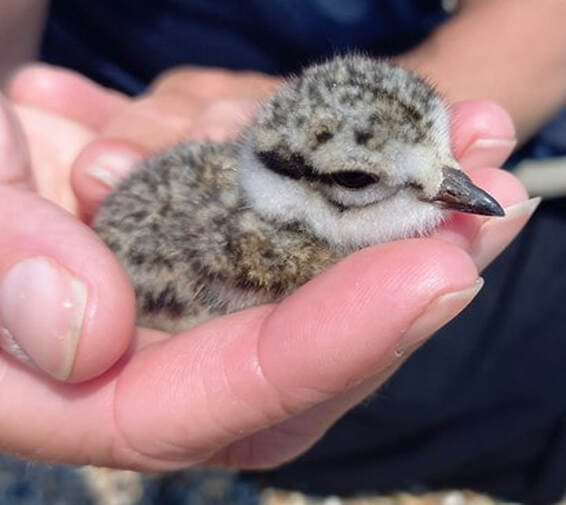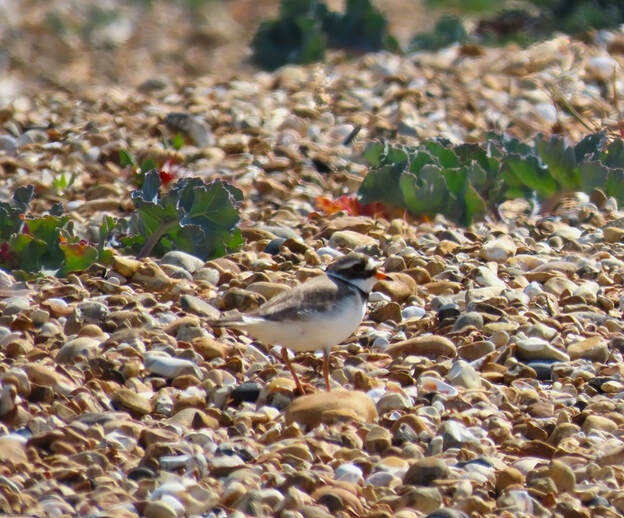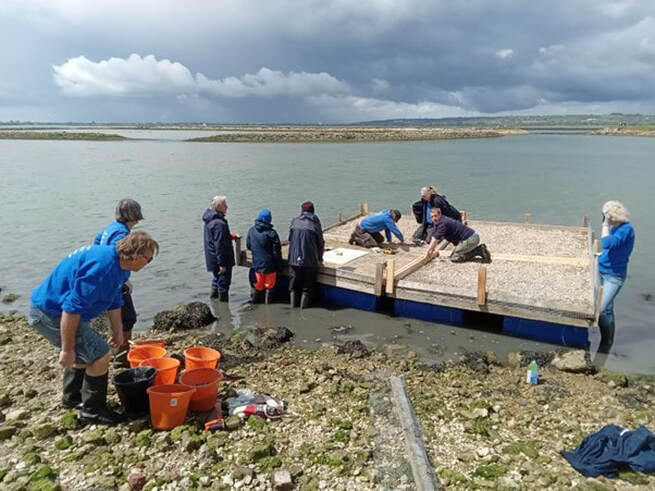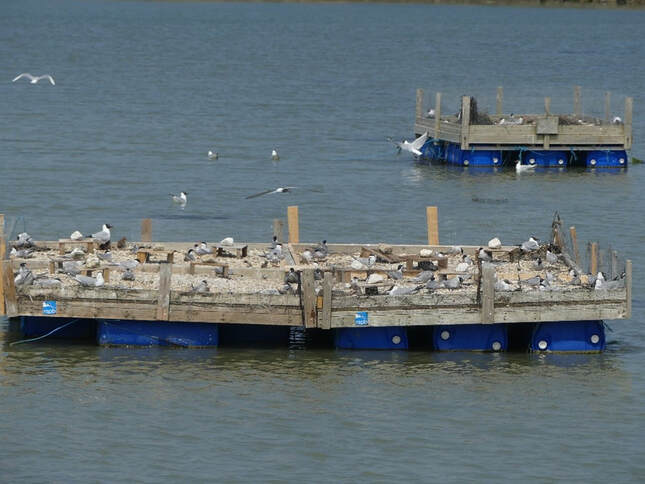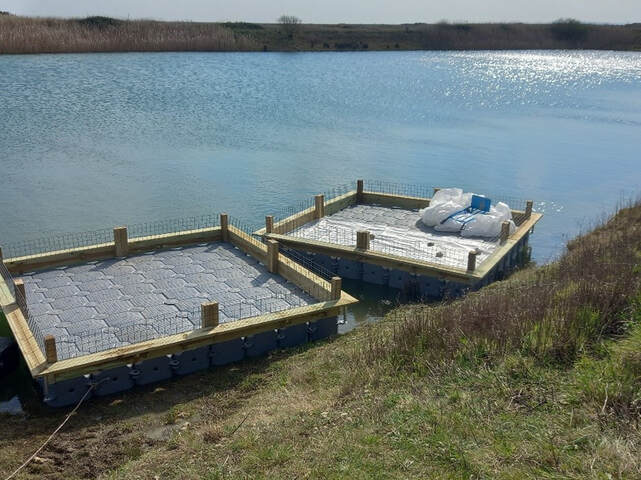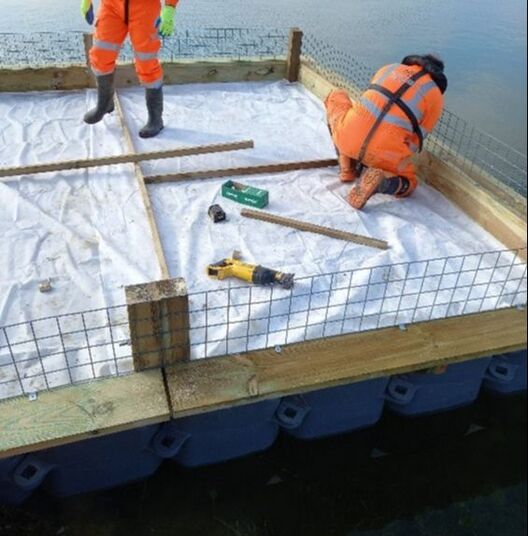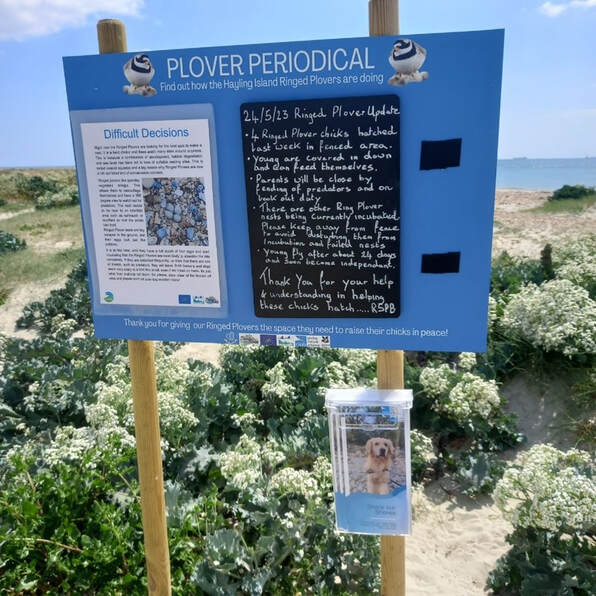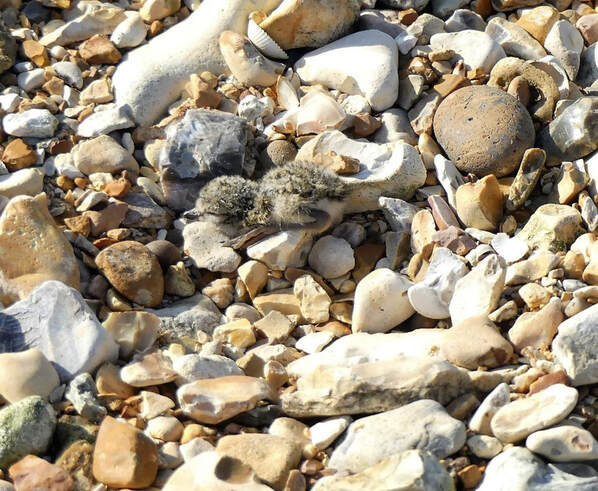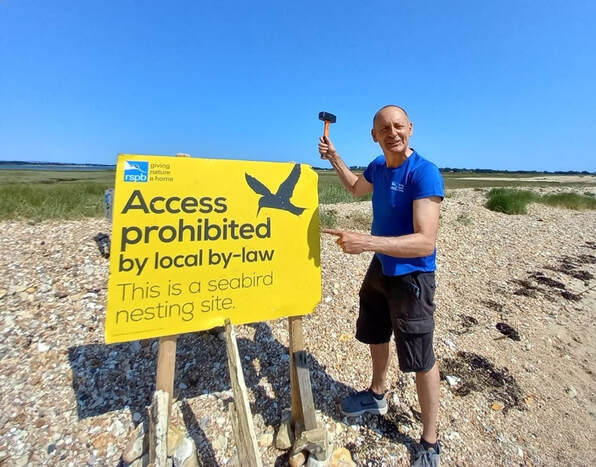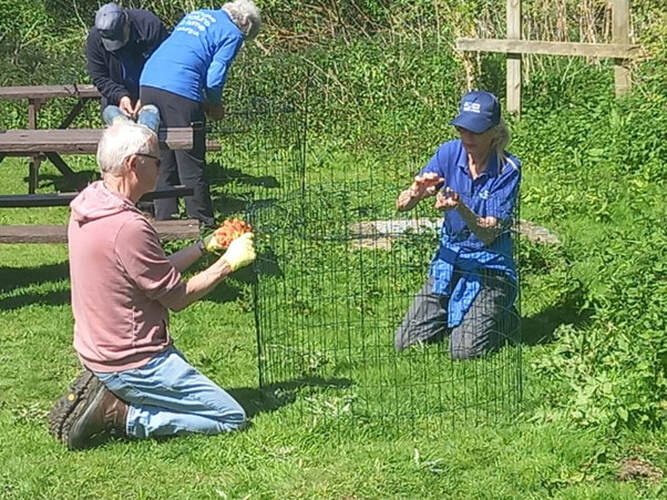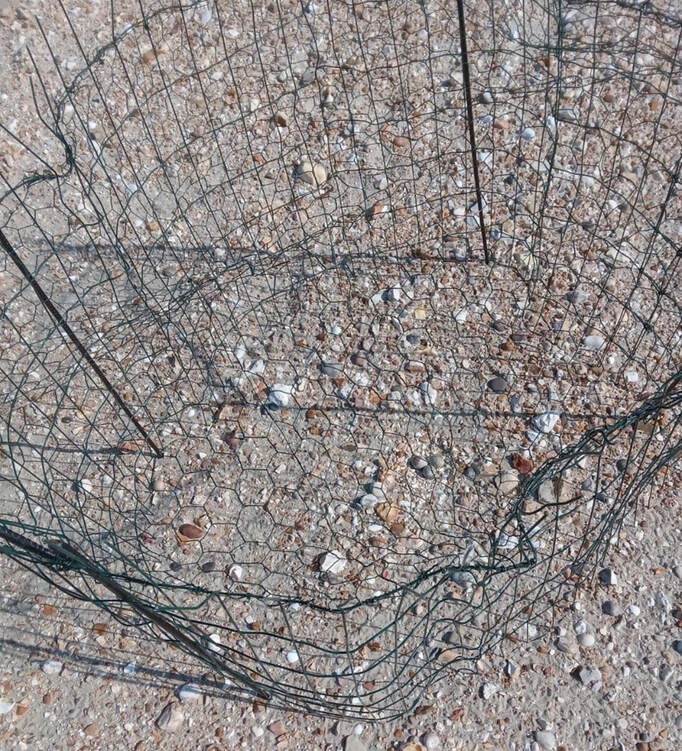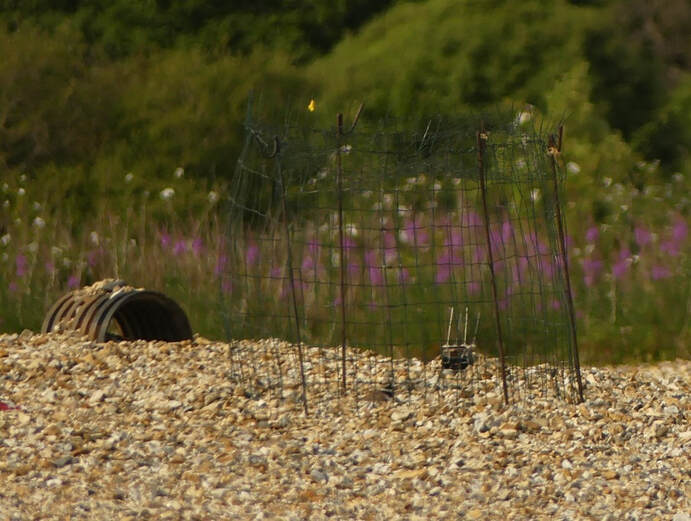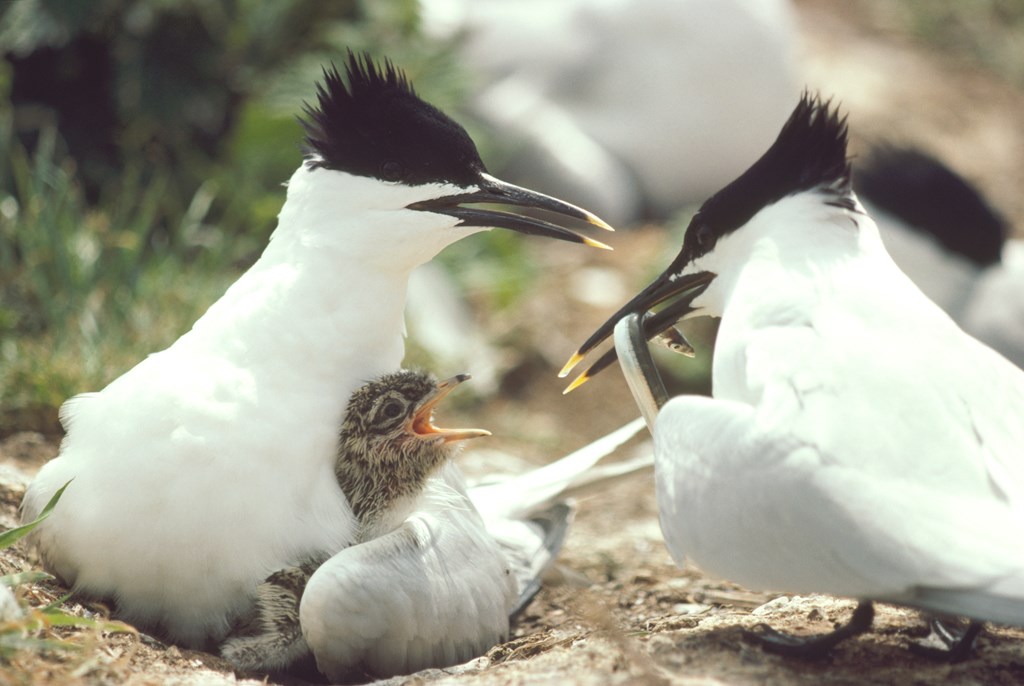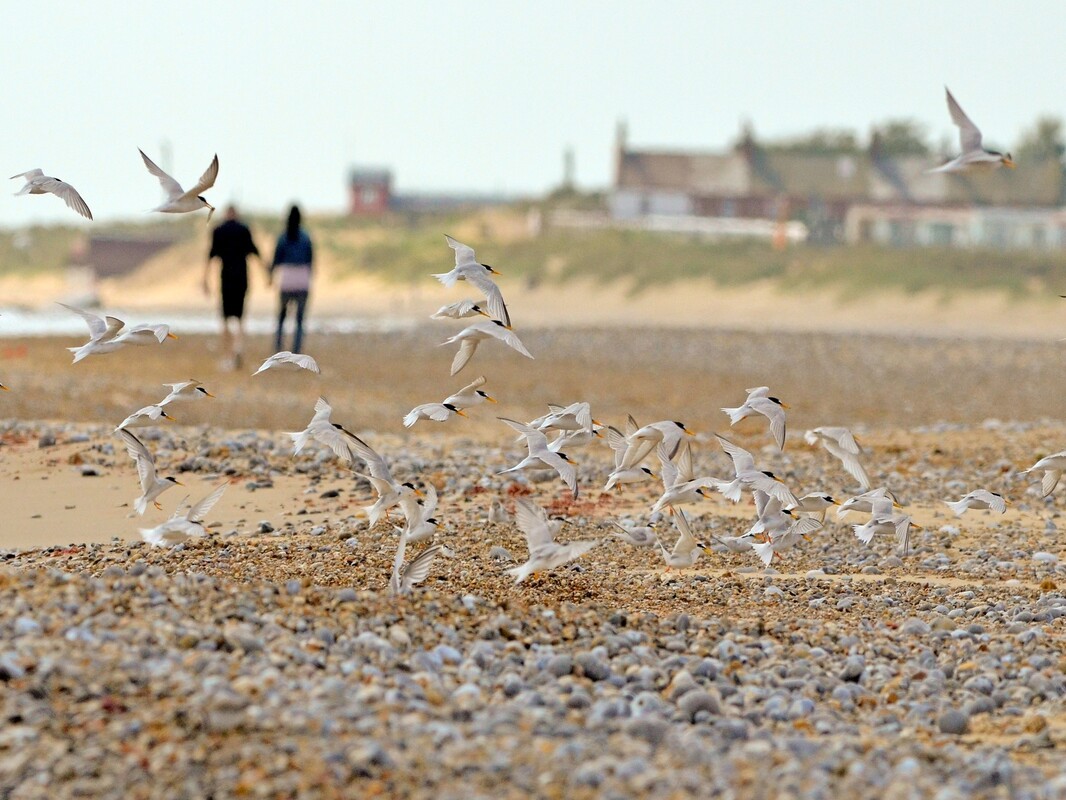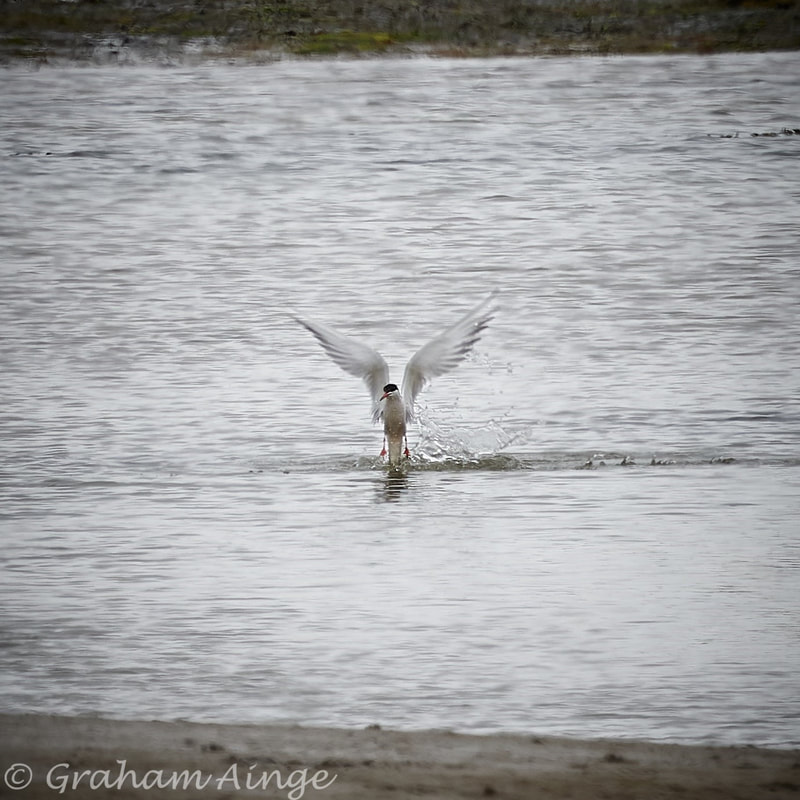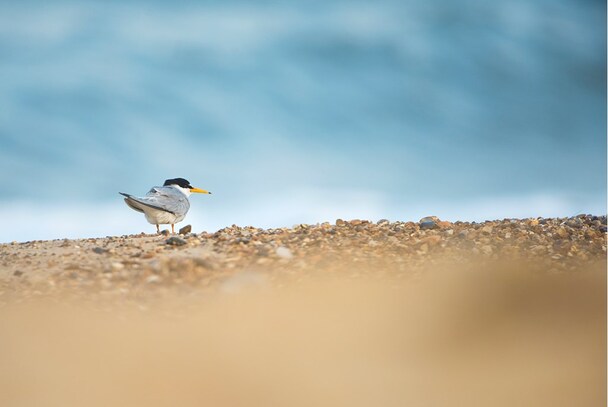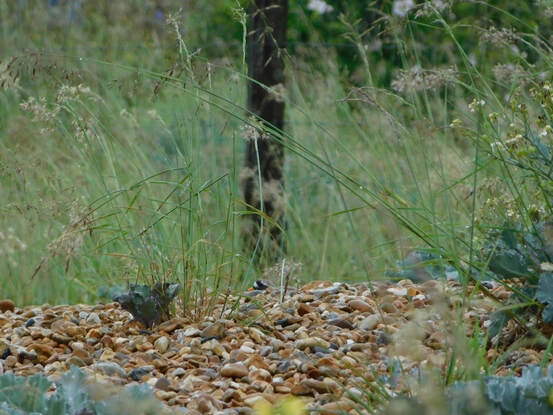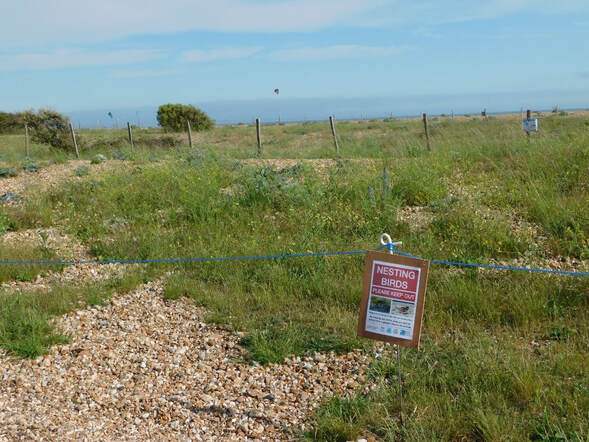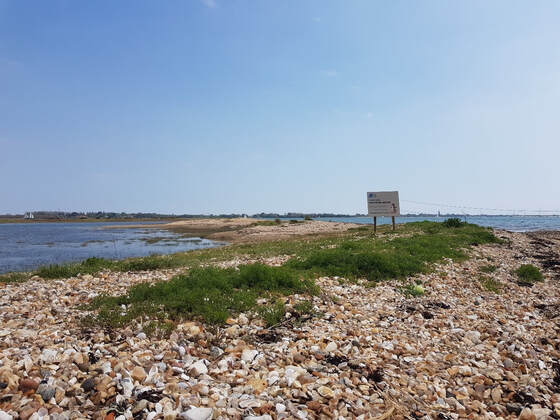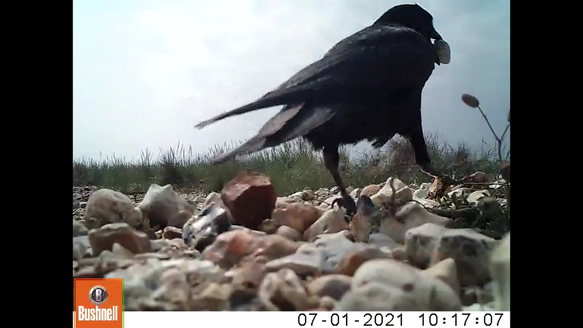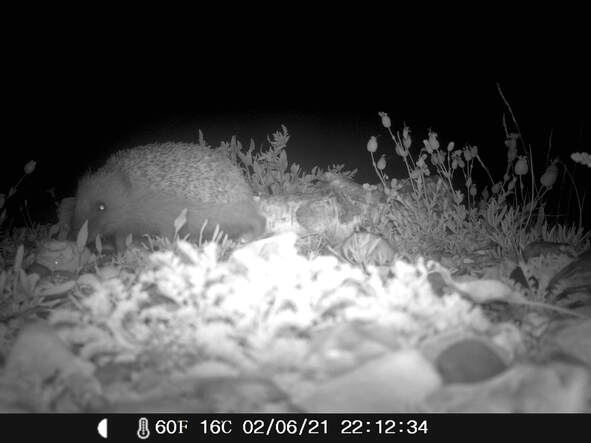|
Hello, my name is Mark Appleton and work as Beach Nesting Bird Project Officer along the Solent. I joined the RSPB in this role, this March 2023. So, what does a Beach Nesting Bird Project Officer do? I will attempt to explain some of the tasks I have undertaken so far. Thanks to the LIFE Programme (LIFE on the Edge) and the Solent Seascape Project, I was recruited to help change the fortunes of shore nesting birds on multiple sites, both on and off natures reserves across the Solent. This even includes working at the Browndown Military Training site. The area of Solent that I am responsible for ranges from Hurst Spit on the Western Solent to Pagham harbour on the Eastern Solent. Spread out across the Solent’s shingle and saltmarsh coasts, a diverse range of coastal ground-nesting birds make their home each summer. Ringed Plover, Oystercatcher and Little Tern regularly attempt nesting on our shingle beaches looking for new sites each year to raise a new generation as well as returning to old favourites. At the time of writing, we are in the very busy period where all our beach nesting birds are beginning to hatch, and a lot of my time is spent monitoring and trying to protect them Dense colonies of Sandwich Tern, Black-headed gull and Mediterranean Gulls take advantage of the water surrounded shingle and saltmarsh islands whilst common tern use a mixture of sites varying from man made structures to secluded shores. All these species are facing the growing challenge of fitting in on our very busy coasts. That’s where we are aiming to make a difference. I have been involved in the creation and deployment of these manmade structures, rafts for the common terns, working both with the RSPB Pagham wardens and volunteers to implement. Another part of the role is to develop, empower and support teams of volunteers to deliver shore nesting bird protection. Both the RSPB Pagham volunteers and RSPB Gunner point volunteers have been essential in providing support. Without them a lot of the jobs would not get done. At Hayling Island Gunner point this year we have continued developing the Ringed Plover Project that was set up by local conservationist Trevor Codlin. With the help of volunteers, we have cordoned off a section of the beach with mesh fencing to give Ringed Plover space to nest and bring up their chicks free from human and dog disturbance. The volunteers helped to install the fencing and regularly patrol the area to educate, raise awareness and inform visitors about how we can help Ringed Plover here by giving them lots of space and keeping away from fenced off areas so they can incubate their eggs without nest failures. I have created a Whatsapp group for the project so we can all provide each other updates on patrols and monitoring results. At the time of writing, we have had 3 successful nests with a total of 8 chicks with 2 very close to fledging. Unfortunately, our Ringed Plovers cant read and one family regularly wonders outside the fence. Only this week a dog was seen chasing the family and was only saved by the adult male luring the dog away by flying along the beach with the dog in close pursuit. This is why our brilliant volunteers are so important in raising awareness. To support our volunteer rangers I have created signage, a periodical update board and leaflets to inform the public. Deploying and creating signage is a very important part of the role as areas of prime nesting area need protecting Monitoring of breeding Ringed Plovers has identified that predation is one of the main factors in preventing hatching success. High levels of predation are likely to be exacerbated due to loss of good quality habitat, rising sea levels, and increasing human disturbance which could be resulting in birds nesting in sub optimal conditions and closer together. This year I have been part of the RSPB scientific study to test the effectiveness of nest cages on the hatching success of beach-nesting Ringed Plovers. So far the results are very encouraging and trail camera footage has shown protection from foxes, carrion crows, dogs, kestrel and even a tawny owl. An important part of the role is to continue building partnerships across a broad range of organizations so that we collaborate and achieve optimum success in trying to help nature. I try to provide updates and communication between organizations to achieve this and collaboration has include RSPB Pagham, Natural England at North Solent Nature Reserve, Hampshire Countryside Service at Lymington and Keyhaven Nature Reserve and Hook with Warsash , Browndown Military Training camp and many amazing volunteers. I hope this gives a flavour of some of the tasks involved with the role. If I had to summarise the role I would say: -
Buckler’s Hard Website: https://www.bucklershard.co.uk/events/conservation-awareness-day/ Facebook: https://fb.me/e/3h8QvEutw
Happy summer holidays but please remember to look out for our beach nesting birds and give them lots of space with dogs under close control 😊 Thank you for reading Mark
3 Comments
Blog by Leigh Lock, RSPB Project Development Manager The global and national threats to seabirds are widely recognised and much focus understandably links the status of seabirds with the state of our seas which is where most seabirds spend most of their time. But what about the state of the ‘land’ where seabirds spend the breeding season – a critical phase of their lifecycle? As a land-based observer of birds on the coast for decades, the growing pressure on breeding seabird sites has been a major concern and I feel we have reached a tipping point where if we don’t act now there will be no safe nesting space left for seabirds in some areas in the future. Therefore, I was excited by the prospect of Seabird Conservation Strategies being developed within all four UK counties by government – each will set out the strategic needs of our seabird species and set out a route map for their recovery. This process in England has been led by DEFRA and NE. But I wanted to make sure that the current state of seabird colonies in England was reflected in this process and that the thoughts and concerns of those most close to the sites – the site managers, conservation officers etc responsible for these areas– were captured. So I contacted as many of those key people around the coast as possible to gather views on pressures impacting on seabird colonies. This is probably the first time such an assessment has been made. Much of this information gathered was necessarily subjective, being based on the opinions of the site managers, and others. However, expert judgement provided by the site managers most familiar with the sites, and their issues, constitutes the best available evidence on issues affecting England’s breeding seabirds. The process does present a ‘ground truthing’ to compare with other available data sources so that all the available information together can be used as ‘weight of evidence’ to identify the main issues and develop solutions to them. Working closely with colleagues within NE, we then looked to align this rather broad-brush assessment of pressures on colonies with other data sources being carried out to inform other areas of the strategy. Information was gathered on 222 natural sites (i.e., excluding urban gulls) and covering 24 seabird species – this representing the vast majority of England’s seabirds. Pressures were assigned to predefined categories including disturbance, habitat loss, predation, invasive species, disease, and control. Note that the assessments were carried out before the widespread and serious impacts of Avian Influenza (AI) were recorded in England in 2022. Overall, the most widespread was disturbance (see below), with both habitat loss and predation impacting on over 50% of the sites. The other pressures were recorded at far less sites, although their impacts at individual sites could be very significant (e.g., invasive species on islands). There are plenty of discussion points emerging from this but below I have pulled out just three. 1. The widespread impacts of disturbance Disturbance is the most widely reported pressure affecting England’s breeding seabirds impacting on 89% of the coastal sites, all sites supporting species like little tern and Sandwich tern, and 100% of English SPAs with breeding seabird features. Site managers see disturbance as THE rapidly growing issue, and human recreational disturbance at coastal sites is predicted to increase. Disturbance of nesting seabirds is caused by a range of recreational activities – beachgoers, dogwalkers and recreational fishers on land, and recreational watercraft such as jet skis, paddleboarders from the sea. Although disturbance is particularly an issue for ground-nesting birds such as terns and gulls at soft coast sites, I was also surprised how widely it was reported at cliff colonies and even offshore islands where birds vulnerable to disturbance from the sea. Disturbance at nest sites can have significant negative impacts on seabird breeding success through increased exposure of eggs and young to predation and the elements and can lead to the abandonment of nest sites and even entire colonies. What I see are overstretched, under resourced conservation organisations trying to manage coastal sites where nature conservation should be the priority, but recreational interests prevail. Many areas have wardens to ‘protect’ nesting birds and engage with the public. But without zonation policies and legislation to restrict certain activities, on-site teams of staff and volunteers face an uphill battle, and the birds using these sites face a bleak future. 2. Sea level rise and coastal erosion present an existential threat to some of England’s most important seabird colonies. Within England, most seabird sites occur on ‘soft coast’ sites – nearshore islands, salt marshes, lagoon islands and shingle banks. These habitats are under massive pressure and the reduction in size and quality of nesting habitat is the second most widespread pressure in England. Without intervention, 2,000 Ha of protected coastal habitats is predicted to be lost in England by 2060 with even greater areas being functionally lost as breeding habitat due to regular flooding. Previously, these losses were mainly from development and land claim, but the key future threats to coastal habitats are from climate change-related sea level rise, coastal erosion, and coastal squeeze. Mean sea levels in the UK have already risen by approximately 17 cm since the start of the 20th century and climate predictions show that they will continue to rise under all emissions scenarios until at least the year 2100. Increases in sea level rise are difficult to predict but are likely to be greatest in southern and eastern England where some of the largest colonies are. Rising sea levels mean that more coastal seabird breeding habitat will be lost, and the risk of intermittent flooding of nest sites is also increased. In addition to mean sea level rise, the risks of extreme sea levels and flooding are compounded by increases in storm events. Species that nest on the ground in sand and shingle habitats, such as terns and gulls, are particularly at risk, as large areas of these types of habitats can be lost rapidly with only minor increases in sea level. Many current breeding sites for terns and gulls on beaches and low-lying near-shore islands which are likely to become unsuitable or be lost entirely within the next 10 years. Little terns are particularly at risk because they tend to nest just above the high-water mark and in recent years high proportions of the UK’s little tern nests have been flooded out during spring tides and storm surges. Short term fixes are in place at many sites. Habitat management to keep sites open, recharge of shingle islands to raise their levels above highest tides but longer-term measures are required to ensure that seabirds have safe nesting sites for future decades not just the next few years. This involves factoring seabird breeding habitat into multi-stakeholder strategic management planning eg Shoreline Management Plans (SMPs), Nature Recovery Networks (NRNs), Local Nature Recovery Strategies (LNRS)) and the implementation of the government’s 25-year Environment Plan. Breeding seabirds should be considered in full as part of these overarching plans and programmes, to ensure that existing breeding sites are adequately managed, and new breeding habitat is created and maintained, and linked to funding streams like Biodiversity Net Gain.  Beneficial use of dredged sediment can be used more widely to provide habitat for nesting seabirds and provide natural sea defences – here 50,000 cubic metres of sediment delivered through @ProjectLOTE working with Harwich Haven Authority, EA and the landowner supports the most important little tern colony in Essex (c) JPullen 3. Avian Influenza and the in-combination effects.
As mentioned above, the assessment was carried out last year before the impacts of AI were recorded in England this summer. Disease was not noted as a significant pressure and has not really impacted on seabirds since botulism on gulls in the past. But the impacts of AI in 2022 have been severe – impacting significantly on the largest UK and England colonies of both roseate and sandwich terns – Coquet and Scolt Head Islands respectively -with 1000s of dead breeding adults and large-scale breeding failure at these colonies. we await a full assessment of the impact of AI on seabirds in 2022 and how it might impact in the future. But think of the conditions under which AI was able to make such an impact. The ‘in combination’ effects of habitat loss, predation, disturbance have pushed seabirds to the edge – habitat loss squeezing seabirds into fewer and fewer suitable areas, which then become honey pots for predators, and even these few special sites coming under the unbearable pressure of disturbance. All our eggs in fewer and fewer baskets. And then a disease comes along which thrives in conditions where it can spread rapidly amongst individuals in closely packed colonies. To have seabird populations that can be resilient to AI and other diseases, we need more space for them to nest safely, allowing more colonies to thrive, and allowing more mobility from site to site to respond to changes in local conditions. Building resilience to disease and other pressures, requires spreading the risk – more and bigger sites, better managed. For this we need to rethink how our coast is managed. The report The full report is on the documents page of this website. Lock, L., Donato, B., Jones, R., Macleod-Nolan, C. 2022 England’s breeding seabirds: A review of the status of their breeding sites and suggested measures for their recovery. RSPB and Natural England report. The report highlights the most important sites and actions for the recovery of seabirds in England. The recommendations from this report on site management have been incorporated into a wider set of recommendations covering the full suite of seabird ecology -under four categories -breeding, feeding, surviving and knowledge. These recommendations have been made by NE to DEFRA to inform the further development of the England Seabird Conservation Strategy and the implementation of the 25 Year Plan. The Strategy should be available early in 2023. Through ProjectLOTE we will continue to advocate for these changes and work with stakeholders all-round the coast to deliver what we can to help seabirds. Final thoughts There are probably few more committed and enthusiastic workers than those managing seabird colonies and they are doing a brilliant job holding the line against growing pressures from all directions. But they need help. For all the above reasons, the England Seabird Conservation Strategy couldn’t come at a better time, and we must all hope that it brings a step change in the priority and resources allocated to management of seabird colonies in England. Over to you DEFRA. Thanks to all those who contributed information towards this assessment. Good luck to all of you with your challenges ahead. Huge thanks to all our volunteers who help protect our breeding and wintering coastal birds! 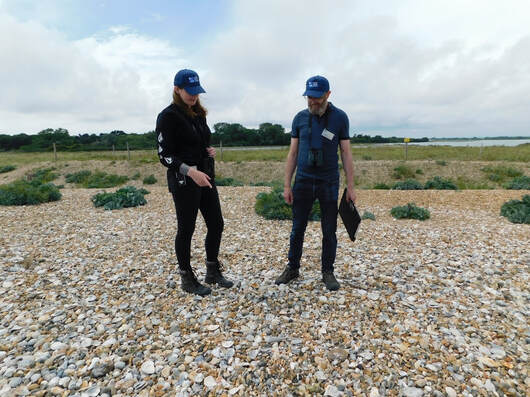 Our Beach Nesting Bird volunteers at RSPB Pagham Harbour discussing the challenges shorebirds face and why it is important for visitors to give them space. Here, they have been using a model Little Tern and photos of nests to help show how vulnerable to disturbance beach nesting birds can be. Photo Credit: Sophie Yeomanson This guest blog is by Alex who kindly shares her experience of volunteering. Why get involved? When you have been busy working for other people, there is nothing more rewarding than working for wildlife. I started volunteering with the RSPB 4 years ago when I retired and was looking for some sort of activity to keep me busy. To say I have been on a steep learning curve would be an understatement. Up until then, I had not marvelled at a pair of owlets, peered into a bee nesting hole, or observed sea birds diving into the lagoon for food. I knew very little about the natural world, so volunteering allowed me to learn at my own pace. This past spring and summer I joined the beach nesting bird team at RSPB Pagham Harbour and Medmerry with my husband. Whilst I was chatting to people visiting and giving them information to take home, my husband was using his camera to capture the wildlife in all its glory! I love sharing my knowledge of the wildlife to visitors, especially to the children who are so eager to learn. No dinosaurs seen yet though! I also love being part of a great team of people who share their knowledge and experiences with me. Favourite part of being with the Beach Nesting Bird team?
“I especially enjoyed engaging with inquisitive kids that wanted to “spot the tern” and then know more. I liked speaking to people who were interested in what we are trying to achieve.” How can you help? We are looking to expand this team across the wider Solent area in time for the next breeding season to help safeguard other nesting sites and provide a joined-up network of safe spaces for seabirds and beach nesting waders. Find out how to get involved here: https://www.rspb.org.uk/get-involved/volunteering-fundraising/volunteer/ Or you can enquire through the LIFE on the Edge website: https://www.projectlote.life/ Blog by Sophie Yeomanson, RSPB Community Shorebird Officer In the Solent, beach nesting birds are faced with many threats, from increasing visitor pressure, to loss of suitable habitat for nesting. Every year, colonies of Little, Common and Sandwich Tern migrate to the Solent from Africa to nest on our shingle beaches, alongside Ringed Plover, Oystercatcher, Black-headed and Mediterranean gulls. My name is Sophie and here is some insight into the work I have been doing for the past three months as a Shorebird Officer for LIFE on the Edge in the Solent. Initial Monitoring Monitoring the threats to breeding birds on a site is important, as this will inform management practises to mitigate against them. Much of the work we have been doing in the Solent over the past few months has involved watching nests, recording disturbances, and monitoring how the nesting birds have been reacting to these disturbance events. Discovering how the beach is used by people and other wildlife is an important first step to finding ways to protect the nesting birds. Different species react differently to threats, for example, we have seen ringed plovers performing a broken wing act when they think their nest may be under threat from an inquisitive dog, intending to lead the perceived predator away from the young before flying off. Other species will mob the threat, an example of this being oystercatchers noisily attacking drones flying overhead, whilst leaving their nests exposed to the elements. Practical measures can be taken to prevent this from happening, such as installing temporary fencing to cordon off areas on the beach and installing signs facing out towards the sea so that people approaching from the water know where to avoid when landing. So far in the Solent, temporary fencing has been installed across three different sites for the first time, giving refuge to multiple families of little tern, ringed plover, and oystercatcher. Trail cameras are also extremely useful tools for helping us to monitor nests. The cameras collect snapshot footage of a fixed location over time, using motion detectors and timers. These have allowed us to monitor the nesting sites without being present 24 hours a day, so we can see what happens when we aren’t looking and plan protection measures for the future. Across the Solent beach nesting bird sites, we have been locating ringed plover and oystercatcher nests and setting up trail cameras to monitor them. Footage from this year has revealed that egg predation (by carrion crows and hedgehogs) has been a cause of nesting failure at one site, where nesting success had not previously been monitored in depth. Because of these findings, decisions can be made about how our team can safeguard nests for the next breeding season to hopefully allow the nests to progress past the incubation stage. Our Excellent Volunteers Engaging with members of the public is another vital part of our work in the Solent to make space for birds to nest. Whilst practical measures to protect nests, such as temporary fenced off areas, work to protect the birds within them, birds can’t read the signs and don’t always choose to nest in the areas we create for them. That’s where community engagement comes in! Our wonderful new team of beach nesting bird volunteers have been doing an excellent job talking to beach visitors around the Solent about the species we share our shores with, and promoting the small changes they can do that will make a big difference to the success nesting birds. Having a daily volunteer presence on the sites has proved to be really important, and visitors have thoroughly enjoyed learning about the birds, often astonished by the images presented to them of eggs laid in shingle scrapes or of tiny camouflaged chicks on the beach. For many of the visitors, conversations with the team are the first they’ve heard of a ringed plover or little tern, let alone seen one on the beach. Raising awareness of these “invisible” species through community engagement will be pivotal in helping these birds to thrive in the future. 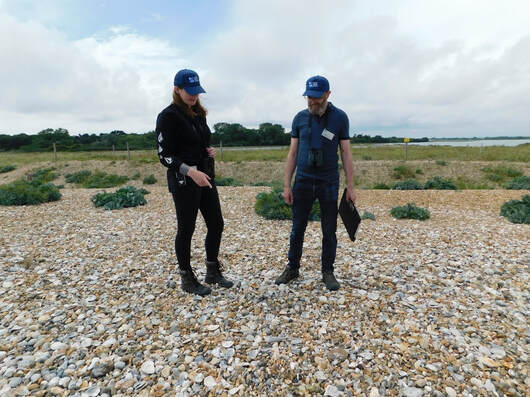 Our Beach Nesting Bird volunteers at RSPB Pagham Harbour discussing the challenges shorebirds face and why it is important for visitors to give them space. Here, they have been using a model Little Tern and photos of nests to help show how vulnerable to disturbance beach nesting birds can be. Photo Credit: Sophie Yeomanson How can you help? We are looking to expand this team across the wider Solent area in time for the next breeding season to help safeguard other nesting sites and provide a joined-up network of safe spaces for seabirds and beach nesting waders. Find out how to get involved here: https://www.rspb.org.uk/get-involved/volunteering-fundraising/volunteer/ Or you can enquire through the LIFE on the Edge website: https://www.projectlote.life/ |
Archives
April 2024
Categories
All
Photo credits: Oystercatcher by Katie Nethercoat (rspb-images.com)
LOTE Logo credits: Saskia Wischnewski |

